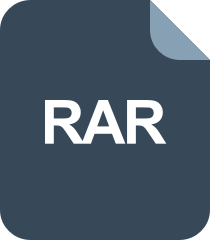nuxt使用vue-quill-editor改变图片大小
时间: 2023-08-25 19:05:27 浏览: 255

改变图片大小
### 回答1:
可以通过自定义 quill 的 toolbar 进行实现,具体步骤如下:
1. 安装 `vue-quill-editor` 和 `quill-image-resize-module`
```
npm install vue-quill-editor quill-image-resize-module --save
```
2. 在 nuxt 项目中,创建一个插件文件 `vue-quill-editor.js`,在该文件中引入 `vue-quill-editor` 和 `quill-image-resize-module`
```javascript
import Vue from 'vue'
import Quill from 'quill'
import VueQuillEditor from 'vue-quill-editor'
import ImageResize from 'quill-image-resize-module'
Quill.register('modules/imageResize', ImageResize)
Vue.use(VueQuillEditor)
```
3. 在 `nuxt.config.js` 中,将该插件引入
```javascript
plugins: [
{ src: '~/plugins/vue-quill-editor.js', ssr: false }
]
```
4. 在需要使用富文本编辑器的组件中,将 `modules` 属性设为 `{ imageResize: true }`,并自定义 `toolbar`
```vue
<template>
<div>
<quill-editor v-model="content" :options="editorOption"></quill-editor>
</div>
</template>
<script>
export default {
data() {
return {
content: '',
editorOption: {
modules: {
imageResize: {},
toolbar: [
// 自定义 toolbar
['bold', 'italic', 'underline', 'strike'],
['blockquote', 'code-block'],
[{ header: 1 }, { header: 2 }],
[{ list: 'ordered' }, { list: 'bullet' }],
[{ script: 'sub' }, { script: 'super' }],
[{ indent: '-1' }, { indent: '+1' }],
[{ direction: 'rtl' }],
[{ size: ['small', false, 'large', 'huge'] }],
[{ header: [1, 2, 3, 4, 5, 6, false] }],
[{ color: [] }, { background: [] }],
[{ font: [] }],
[{ align: [] }],
['clean'],
['link', 'image', 'video']
]
}
}
}
}
}
</script>
```
5. 在 `quill-image-resize-module` 中,可以通过 `minSize` 和 `maxSize` 属性设置图片的最小和最大尺寸
```javascript
Quill.register('modules/imageResize', ImageResize({
modules: ['Resize', 'DisplaySize', 'Toolbar'], // 可以自定义使用的模块
handleStyles: {
backgroundColor: 'black',
border: 'none',
color: 'white'
},
minSize: {
width: 50,
height: 50
},
maxSize: {
width: 800,
height: 800
}
}))
```
### 回答2:
Nuxt使用vue-quill-editor改变图片大小的方法如下:
1. 首先,在Nuxt项目中安装vue-quill-editor插件。可以通过npm或yarn来安装,例如运行以下命令:npm install vue-quill-editor
2. 在Nuxt项目的.vue文件中,引入vue-quill-editor插件。可以通过import语句导入插件:import VueQuillEditor from "vue-quill-editor"
3. 在Vue组件的data属性中,定义一个变量用于保存图片的大小设置,例如:imgSize: "300px"。这里的"300px"表示图片的宽度为300像素。
4. 在Vue组件中,使用vue-quill-editor来创建富文本编辑器的实例。在vue-quill-editor组件中,可以通过配置项来设置图片大小。例如,可以使用formats属性设置图片的默认大小,代码如下:
<VueQuillEditor
ref="myQuillEditor"
:formats="{
image: {width: this.imgSize}
}"
></VueQuillEditor>
这里的image表示图片格式,width表示图片的宽度。可以将width的值设置为data属性中定义的imgSize变量。
5. 最后,在Vue组件的methods中定义一个方法,用于修改图片大小。可以通过修改imgSize的值来改变图片的大小,代码如下:
changeImgSize() {
this.imgSize = "500px";
}
这里将imgSize的值设置为"500px",表示图片的宽度为500像素。
总之,使用Nuxt和vue-quill-editor插件可以方便地改变图片的大小。通过设置format属性和修改data中的imgSize变量,可以达到改变图片大小的效果。
### 回答3:
在Nuxt中使用vue-quill-editor插件来改变图片大小,可以通过自定义上传组件以及配置项来实现。
首先,在Nuxt项目中安装vue-quill-editor插件和相关依赖:
```bash
npm install vue-quill-editor @quilljs/image-resize-module
```
然后,在Nuxt中创建一个自定义的上传组件(Upload.vue):
```html
<template>
<input type="file" @change="uploadImage" />
</template>
<script>
export default {
methods: {
uploadImage(event) {
const file = event.target.files[0];
const reader = new FileReader();
reader.onload = () => {
// 将图片转换成base64格式,并放入editor中
const imgBase64 = reader.result;
this.$emit('insertImage', imgBase64);
};
reader.readAsDataURL(file);
}
}
};
</script>
<style scoped>
input[type="file"] {
display: none;
}
</style>
```
接下来,在Nuxt中的页面(比如:index.vue)中使用vue-quill-editor和自定义的上传组件来实现图片大小调整:
```html
<template>
<div>
<div class="toolbar">
<button @click="changeImageSize">改变图片大小</button>
</div>
<quill-editor v-model="content" ref="myQuillEditor">
<upload @insertImage="insertImage"></upload>
</quill-editor>
</div>
</template>
<script>
import { quillEditor } from 'vue-quill-editor';
export default {
components: {
quillEditor,
upload: () => import('~/components/Upload.vue')
},
data() {
return {
content: ''
};
},
methods: {
insertImage(imgBase64) {
const quill = this.$refs.myQuillEditor.quill;
const range = quill.getSelection();
quill.insertEmbed(range.index, 'image', imgBase64);
},
changeImageSize() {
const quill = this.$refs.myQuillEditor.quill;
const images = quill.container.querySelectorAll('img');
Array.from(images).forEach((image) => {
// 修改图片大小的逻辑
// 可以通过修改image的width和height属性来改变图片大小
});
}
}
};
</script>
<style scoped>
.toolbar {
margin-bottom: 10px;
}
</style>
```
以上,我们在页面中添加了一个按钮来调用changeImageSize方法,该方法可以获取Quill编辑器中的图片元素,进而可以改变其大小。通过修改图片元素的width和height属性,可以实现改变图片大小的效果。
当然,具体的改变图片大小的逻辑可以根据实际需求来进行调整和扩展。
阅读全文